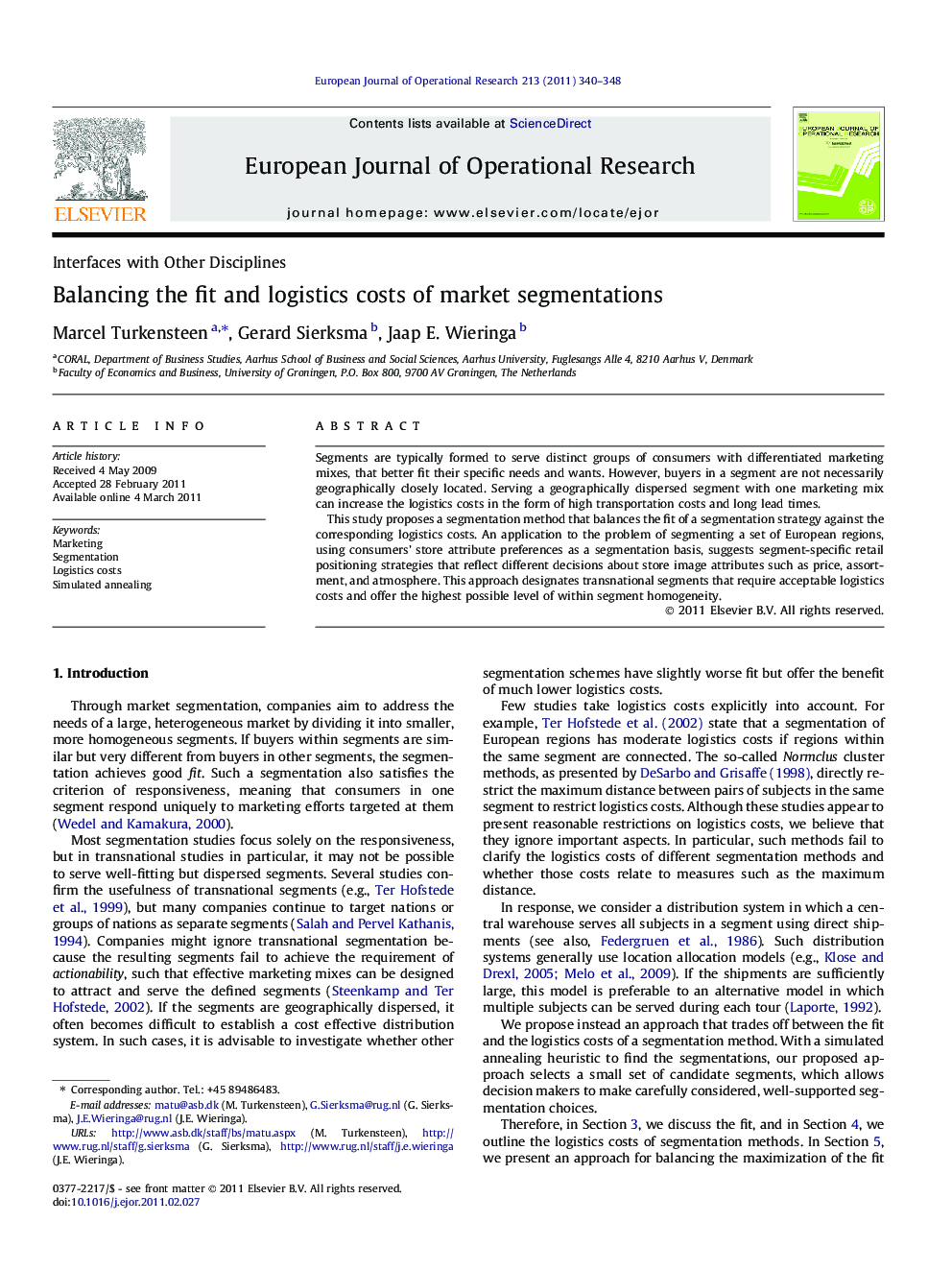| Article ID | Journal | Published Year | Pages | File Type |
|---|---|---|---|---|
| 480782 | European Journal of Operational Research | 2011 | 9 Pages |
Segments are typically formed to serve distinct groups of consumers with differentiated marketing mixes, that better fit their specific needs and wants. However, buyers in a segment are not necessarily geographically closely located. Serving a geographically dispersed segment with one marketing mix can increase the logistics costs in the form of high transportation costs and long lead times.This study proposes a segmentation method that balances the fit of a segmentation strategy against the corresponding logistics costs. An application to the problem of segmenting a set of European regions, using consumers’ store attribute preferences as a segmentation basis, suggests segment-specific retail positioning strategies that reflect different decisions about store image attributes such as price, assortment, and atmosphere. This approach designates transnational segments that require acceptable logistics costs and offer the highest possible level of within segment homogeneity.
► Companies regularly decide on which groups of consumers they should target. ► We develop an approach that includes logistics costs into these decisions.► Our approach provides a range of options with different logistics costs levels.
